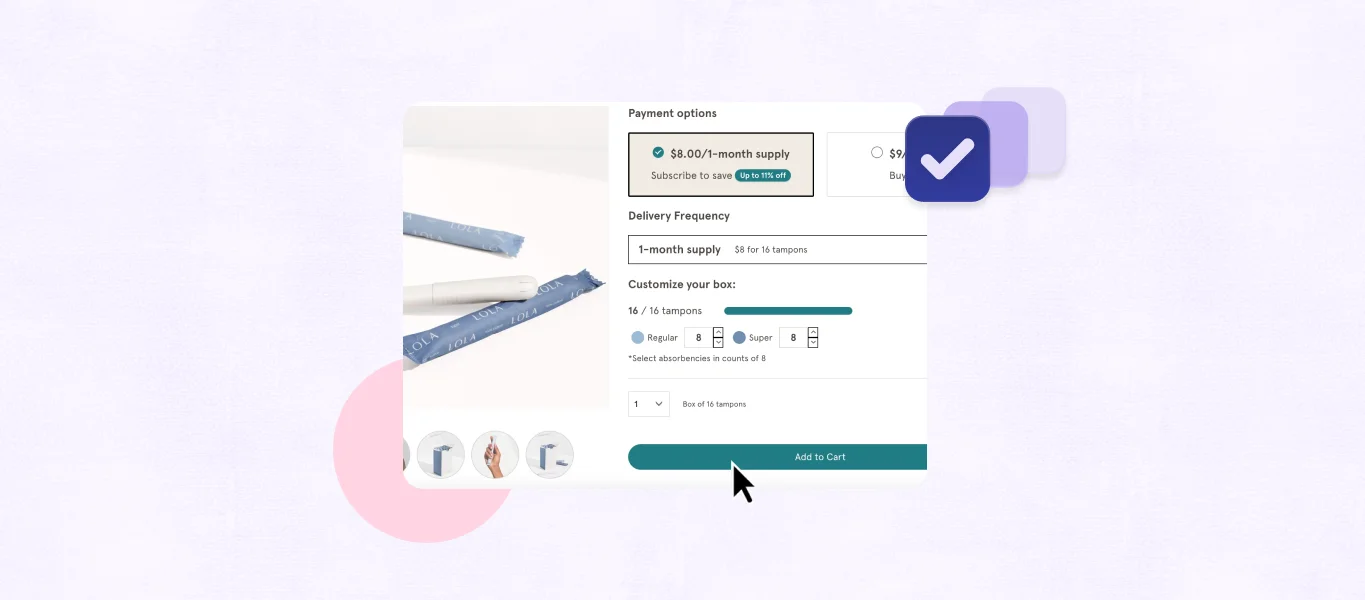In today’s rapidly changing digital landscape, it’s more important than ever that ecommerce businesses stay ahead of the curve when it comes to leveraging design and technology to acquire, convert, and retain customers.
With so much competition online, companies that fail to adapt risk falling behind and losing market share to their more agile competitors.
In this blog post, we’ll explore how and why focusing on continuous improvements (rather than periodic redesigns) can help ecommerce businesses stay ahead of the competition, improve user experience, and ultimately drive more conversions and revenue.
The ongoing challenge of acquiring, converting & retaining customers
Acquiring customers in the highly competitive world of ecommerce can be a difficult task, especially with changes to paid media tracking and increasing financial pressures.
Many ecommerce businesses struggle to drive traffic to their site and convert those visitors into paying customers. However, ongoing user testing, conversion rate optimization (CRO), and regular user experience (UX) design reviews can be key to improving conversion rates and customer retention, helping businesses make the most of the investment they make in new customer acquisition.
The benefits of continuous improvement
If your website isn’t performing as well as you’d like, a full site redesign may be on the cards. At times, this is the appropriate choice—for example, when a merchant’s tech stack can no longer meet the increasing demands of the business.
This can be a daunting and costly process, but it’s often the only way to resolve issues that arise from an outdated or unscalable platform. However, for many other on-site issues, ongoing optimization is a more effective (and cost-effective) solution.
Continuously improving your existing site allows businesses to be more agile and adapt quickly to changing market conditions or customer needs. This involves making incremental improvements to a site over time, without disrupting the user experience or requiring a large-scale redesign.
On top of this, by continuously testing and optimizing their site, brands can identify and address issues or opportunities as they arise, rather than waiting for a scheduled redesign. This can lead to faster time-to-market for new features or changes, and ultimately drive growth for the business.
There are many examples of ecommerce businesses that have successfully embraced this approach to acquire, convert, and retain customers. For example, Amazon is known for its ongoing optimization of the checkout process and personalized recommendations, while Airbnb has continuously improved its user experience through A/B testing and user feedback.
6 strategies for continuous improvement
The idea of the ongoing optimization of a site is by its very nature flexible and responsive. However, it frequently involves the following key elements:
1. Analytics & data tracking
Adopting an analytical approach is essential to ongoing site optimization as it provides insights into how customers are using your website and where improvements can be made. Tools like Google Analytics and Hotjar can help you identify areas where your website could be improved to enhance conversions, such as pages with high bounce rates, poorly performing products, or abandoned shopping carts.
2. UX design
Effective user experience design helps customers easily navigate your website and find the products they are looking for. By utilizing analytics and user data to inform design decisions, brands can ensure that all changes are based on real user behavior rather than assumptions. Adopting this data-driven design approach allows ecommerce businesses to curate leading user experiences that are built around their unique audience.
3. CRO
Conversion rate optimization focuses on increasing the proportion of visitors to your site who become customers. The process involves carrying out extensive qualitative and quantitative research to get a true understanding of the customer before A/B testing changes, with the aim of reducing friction to drive conversions.
Increasing your conversion rate can have a significant impact on profit because it aims to drive more revenue without increasing spend.
4. SEO
Search engine optimization, or SEO, works to ensure that your products rank highly on search engines. The continuous process involves optimizing your site’s product and meta descriptions, improving its technical makeup, increasing page speed, and creating new SEO-powered content to drive relevant traffic to your site.
5. Mobile optimization
Last year, 41.8% of ecommerce sales were carried out on mobile devices, so it’s essential that websites are mobile-ready. Mobile optimization involves ensuring that a site is easy to use and navigate via mobile, with fast load times and a seamless user experience.
6. Embracing new technology & design trends
A key part of continuous improvement is keeping on top of the latest tech and design trends to innovate your site and brand. In the tech space, new innovations like voice search, artificial intelligence, and augmented reality are changing the ecommerce landscape.
For example, some merchants are using chatbots to provide personalized product recommendations and customer support, while others are using augmented reality to allow customers to visualize products in their own homes.
When it comes to ecommerce design, trends are constantly evolving. For example, some current trends include minimalist design, micro-interactions, and personalized product recommendations.
Businesses that stay up-to-date with these trends and embrace revolutionary technologies can create more engaging and effective user experiences that allow them to gain a competitive edge.
Balancing improvement & consistency
Maintaining a consistent brand identity and user experience can be challenging when continuously improving an ecommerce site. As businesses make changes and updates, there is a risk of creating a disjointed experience for users, which can lead to confusion and a lack of trust in the brand.
However, establishing brand guidelines and design systems can help maintain consistency and ensure that all changes are in line with the overall brand identity. These guidelines can include everything from color palettes and typography, to the tone of voice and messaging, providing a framework for designers and developers to work within.
A/B testing and user feedback can also help identify areas for improvement and ensure that changes are effective in driving conversions and sales, while also maintaining the overall brand identity and user experience.
By striking a balance between continuous improvement and consistent branding, ecommerce businesses can deliver a better experience for their customers while driving growth and staying ahead of the competition.
The power of continuous improvement for ecommerce
To stand out in today’s competitive landscape, ecommerce brands must constantly strive to improve their user experience and drive conversions. While periodic redesigns may have been the norm in the past, adopting a more agile approach and continually testing and optimizing an existing site is usually a more effective way to get ahead.
Ongoing data analysis allows merchants to continuously identify areas for improvement and implement solutions that are effective in driving growth. By focusing on making incremental, data-driven changes over time, they can create a better experience for their customers, adapt quickly to changes in the market, and ultimately drive more conversions and revenue.
About Underwaterpistol
Underwaterpistol is a specialist Shopify Plus agency that leverages a unique blend of technical and creative expertise to accelerate the growth of ambitious ecommerce brands.
With over 20 years in the business, they know exactly what it takes to build and optimize high-converting ecommerce stores that drive revenue, loyalty, and retention.
Sources
[1] Going to Market Faster: Most Companies Are Deploying Code Weekly, Daily, or Hourly (New Relic)
[2] 9 essential CRO tools for ecommerce stores (Underwaterpistol)
[3] What does CRO stand for? An intro to CRO (Underwaterpistol)
[4] Rise of Mcommerce: Mobile Ecommerce Shopping Stats & Trends in 2023 (Insider Intelligence)



